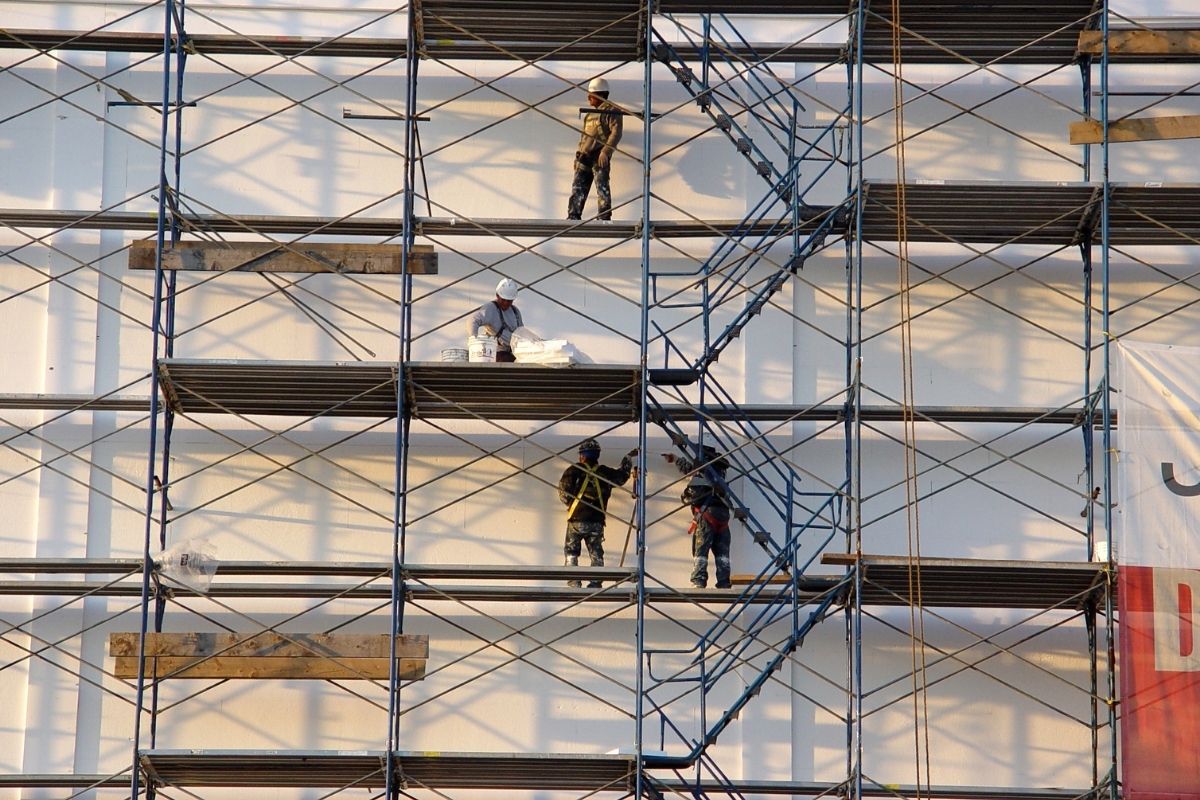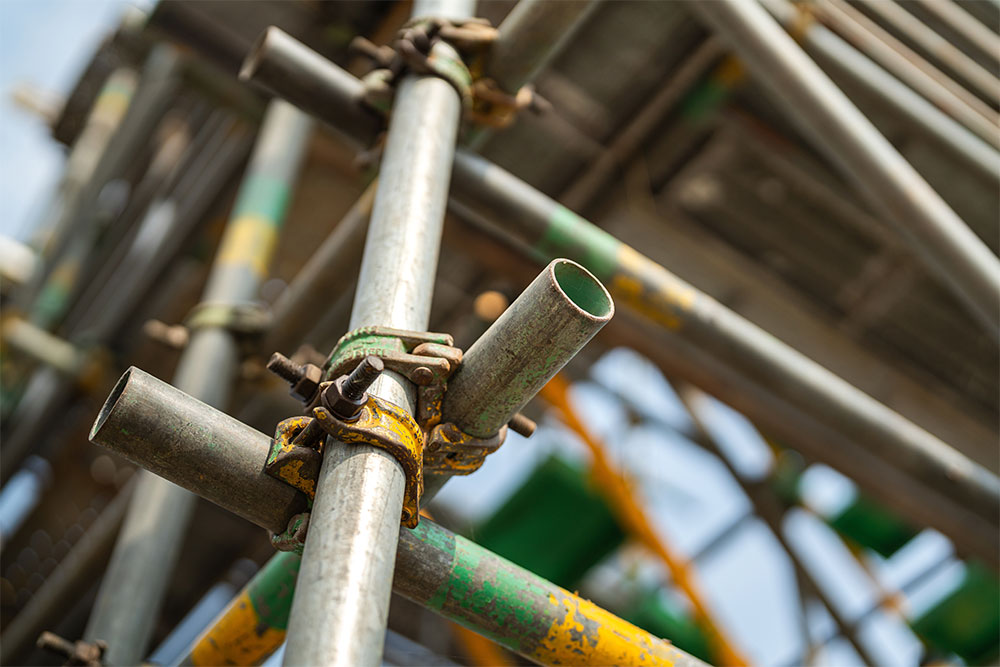Residential Scaffolding Solutions for Safe and Efficient Home Improvements
Residential Scaffolding Solutions for Safe and Efficient Home Improvements
Blog Article
Checking Out the Different Types of Scaffolding Made Use Of in Construction Projects
The construction industry depends heavily on various types of scaffolding to fulfill details project needs, each offering distinctive advantages and applications. Conventional structure scaffolding gives a strong structure for general tasks, while suspended scaffolding is important for job on high-rise frameworks.

Typical Structure Scaffolding
Standard framework scaffolding is one of the most extensively made use of methods in the construction industry as a result of its effectiveness and convenience. This system contains straight and vertical structures that are assembled to develop a stable system for materials and workers. The primary parts consist of upright blog posts, horizontal journals, and diagonal dental braces, which together supply a strong structure that can support substantial loads.
One of the key advantages of typical frame scaffolding is its adaptability to numerous building and construction tasks, ranging from household buildings to large industrial structures. The modular design permits very easy assembly and disassembly, making it reliable for both temporary and long-lasting projects. In addition, the system can be customized in height and size, fitting different building designs and website problems.
Safety is extremely important in scaffolding applications, and conventional frame systems are furnished with guardrails and toe boards to avoid drops and guarantee employee protection. Normal inspections and adherence to safety and security guidelines are essential in keeping the honesty of the scaffold (Scaffolding). Overall, typical frame scaffolding stays a fundamental selection in the construction market, providing a dependable platform for labor and boosting general job efficiency

Suspended Scaffolding
Put on hold scaffolding uses an unique remedy for building jobs that require accessibility to raised surfaces, especially in situations where standard structure scaffolding may be impractical. This kind of scaffolding is normally suspended from the roof or top levels of a framework, using a system of wheels, platforms, and ropes to create a functioning space that can be adjusted to different elevations.
Among the primary benefits of put on hold scaffolding is its versatility. It can be easily repositioned or lowered to fit changes in building and construction requirements, making it excellent for jobs such as window installment, frontage job, and maintenance on skyscrapers. Additionally, the minimal footprint of put on hold scaffolding permits for much better use of ground room in metropolitan atmospheres, where room is typically restricted.
Safety is an important factor to consider in making use of suspended scaffolding. Correct rigging and anchoring systems need to be utilized to guarantee security and protect against mishaps. Operators must additionally be trained in the secure use of this tools. Generally, suspended scaffolding supplies a reliable and reliable service for accessing hard-to-reach areas in different building and construction situations, improving both performance and safety on website.
System Scaffolding
System scaffolding, usually regarded as a modern solution in the this hyperlink scaffolding industry, includes pre-engineered elements that can be quickly put together and adapted for numerous construction projects. Scaffolding. This kind of scaffolding is defined by its modular style, which permits versatility and performance on job sites, fitting various elevations and architectural demands
Generally made from high-strength steel or light weight aluminum, system scaffolding offers enhanced resilience and security. The parts include vertical blog posts, horizontal journals, and diagonal braces, which interconnect securely, guaranteeing a robust structure. The design frequently includes standard fittings, streamlining setting up and disassembly processes, therefore lowering labor time and costs.

Rolling Scaffolding
Rolling scaffolding is a flexible option to standard set scaffolding, made for movement and convenience of use on construction websites. This sort of scaffolding contains a platform supported by frameworks with wheels, allowing employees to easily transfer it as required. The mobility attribute considerably improves performance, as it lessens downtime related to disassembling and setting up fixed scaffolding.
Normally constructed from lightweight products such as light weight aluminum or steel, rolling scaffolding uses a durable yet mobile remedy for tasks needing regular repositioning - Scaffolding. It is specifically beneficial in jobs such as paint, drywall installation, and electrical job, where accessibility to different heights and areas is required
Safety and security is critical in rolling scaffolding style, with attributes such as securing wheels to stop unplanned activity when in usage, and guardrails to protect employees from falls. Additionally, several models are flexible in elevation, fitting different job requirements.
Cantilever Scaffolding

The layout of cantilever scaffolding typically includes making use of arms or brackets anchored to a building or framework, allowing the system to expand outward securely. Security is critical; hence, these scaffolds should be engineered to stand up to ecological problems and numerous tons. Routine examination click over here now and maintenance are important to guarantee architectural honesty and employee security.
Cantilever scaffolding is favored for its versatility and effective use of area, making it a prominent choice in urban atmospheres where area restraints are common. Furthermore, it facilitates easier access to high elevations, ultimately adding to the overall effectiveness of construction jobs. Similar to all scaffolding kinds, proper training and adherence to safety criteria are essential for employees making use of cantilever scaffolding.
Conclusion
In verdict, the varied types of scaffolding made use of in building and construction tasks each serve distinctive functions customized to certain site requirements. Traditional structure scaffolding offers security, while put on hold scaffolding uses versatility for raised tasks. System scaffolding helps with fast assembly, and rolling scaffolding improves wheelchair for varying workplace. Cantilever scaffolding successfully attends to challenges in urban setups. Comprehending these scaffolding kinds is crucial for maximizing safety and efficiency in building, inevitably adding to the successful completion of jobs.
Conventional structure scaffolding provides a tough structure for basic jobs, while suspended scaffolding is essential for job on skyscraper structures.Rolling scaffolding is a flexible choice to standard fixed scaffolding, created for flexibility and simplicity of use on building websites. As with all scaffolding types, correct training and adherence to safety standards are critical for employees using cantilever scaffolding.
Conventional frame scaffolding provides stability, while suspended scaffolding supplies flexibility for raised jobs. System scaffolding helps with quick assembly, and rolling scaffolding improves movement for varying work environments.
Report this page